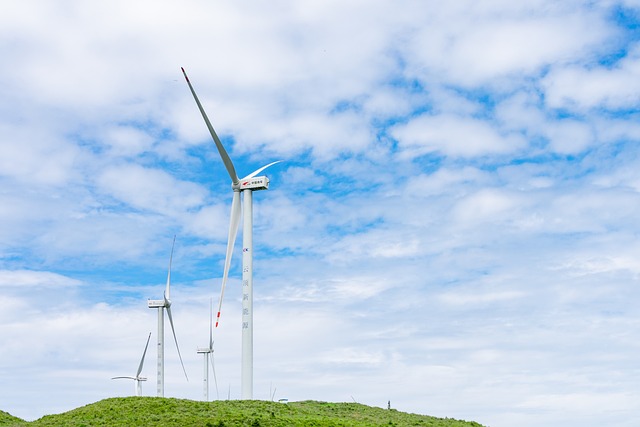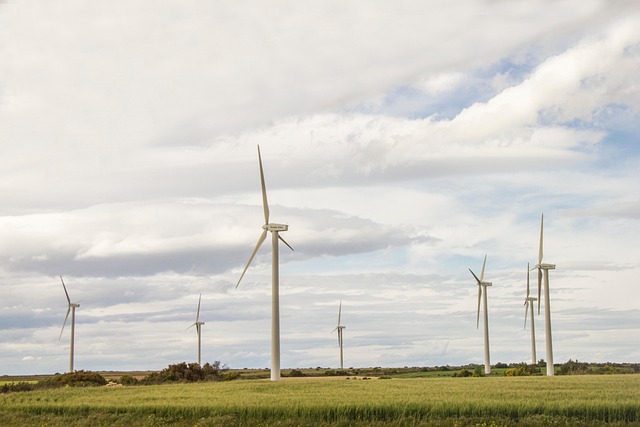Green Dollars: Understanding the Impact of Sustainable Investments
In recent years, the concept of sustainable investing has gained significant traction among investors seeking not only to grow their wealth but also to make a positive impact on the environment and society. Often referred to as ‘green investing’ or ‘impact investing’, this approach focuses on allocating capital to companies, projects, and initiatives that prioritize sustainability. As a result, ‘green dollars’ have emerged as an influential force in global finance, shaping the way we think about investment and the future of our planet.
The Rise of Sustainable Investments
The transition towards sustainable investment strategies can be attributed to several factors, including increasing public awareness of climate change, social injustice, and corporate responsibility. This shift reflects a profound change in values among a new generation of investors who prioritize ethical considerations alongside financial returns.
According to a report by the Global Sustainable Investment Alliance, global sustainable investment assets grew to nearly $36 trillion in 2020, representing an increase of 15% over the previous two years. This remarkable growth showcases the rising demand for investments that deliver both financial returns and tangible benefits to the environment and society.
Understanding Green Dollars
Green dollars refer to the capital directed toward sustainable investments that aim to create positive environmental or social outcomes. These investments encompass a wide range of areas, including renewable energy, sustainable agriculture, affordable housing, and green technology. The key aspects that define green dollars include:
- Environmental Impact: Investments aimed at reducing carbon emissions, promoting biodiversity, and conserving natural resources.
- Social Responsibility: Allocating funds to companies that uphold fair labor practices, support community development, and promote human rights.
- Economic Viability: Supporting businesses and projects that demonstrate potential for financial returns while contributing positively to society and the environment.
The Different Forms of Sustainable Investments
Sustainable investment can take various forms, each with unique strategies aimed at achieving specific outcomes. A few of the most popular methods include:
1. ESG Investing: Environmental, Social, and Governance (ESG) investing involves analyzing companies based on their performance against specific environmental and social criteria, as well as corporate governance practices. Investors use ESG scores as a way to gauge a company’s commitment to sustainability.
2. Thematic Investing: This strategy involves targeting specific themes related to sustainability, such as clean energy, waste reduction, and sustainable agriculture. Investors focus on sectors and companies that align closely with their sustainability goals.
3. Impact Investing: This approach prioritizes investments explicitly designed to generate measurable social or environmental impacts alongside financial returns. Investors often support projects or funds that track their outcomes rigorously.
4. Green Bonds: Green bonds are fixed-income financial instruments specifically designated to raise funds for projects with positive environmental impacts. They have rapidly gained popularity in the investment community as a way to finance climate-friendly initiatives.
The Impact of Sustainable Investments
The impact of green dollars extends far beyond financial returns; it fundamentally reshapes economies, fosters innovation, and creates job opportunities. Here are several key areas where sustainable investments are making significant contributions:
Mitigating Climate Change
One of the most pressing concerns of our time is climate change. As global temperatures continue to rise, sustainable investments aim to mitigate these effects by funding renewable energy projects, improving energy efficiency, and promoting carbon-neutral technology. Transitioning to cleaner energy sources – such as wind, solar, and hydropower – not only reduces greenhouse gas emissions but also fosters energy independence and security.
Promoting Sustainable Economic Growth
Green investments stimulate economic growth by creating jobs in emerging sectors, including renewable energy, waste management, and sustainable agriculture. By investing in innovation and technology, these sectors contribute to a more resilient economy that is less reliant on fossil fuels. Additionally, sustainable investments can lead to increased consumer demand for green products, further propelling economic growth.
Enhancing Social Equity
Sustainable investing also plays a crucial role in enhancing social equity. Many sustainable investment initiatives focus on underserved communities, offering affordable housing, clean water access, and healthcare solutions. By addressing social disparities through targeted investments, sustainable investing helps create a more equitable and inclusive society.
Encouraging Corporate Accountability
As investors increasingly prioritize sustainability, there is growing pressure on corporations to adopt responsible business practices. Companies are now more accountable for their environmental and social impacts, leading to a corporate culture that values transparency, ethical practices, and stakeholder engagement. This shift encourages businesses to align their strategies with sustainable goals, ultimately benefiting both society and the environment.
Challenges and Criticisms of Sustainable Investments
Despite the many advantages associated with sustainable investing, there remain challenges and criticisms that must be addressed. One primary concern is the issue of ‘greenwashing,’ where companies exaggerate or misrepresent their sustainability efforts for marketing purposes. This can mislead investors and undermine the credibility of genuinely sustainable companies.
Another challenge is the complexity and lack of standardization in ESG metrics. Different organizations may have varying criteria for evaluating a company’s sustainability performance, leading to confusion among investors. Establishing consistent and transparent reporting frameworks is essential to ensure the integrity of sustainable investing.
The Future of Green Dollars
The future of green dollars looks promising as the trend towards sustainability continues to gain momentum. With increasing recognition of the urgent need for climate action, governments, corporations, and investors are mobilizing resources and aligning their strategies with sustainability goals. Initiatives such as the Paris Agreement and the United Nations’ Sustainable Development Goals further reinforce the significance of sustainable investments in addressing global challenges.
Moreover, technological advancements are opening new avenues for sustainable investments. Innovations in renewable energy, energy storage, and sustainable agriculture are creating opportunities for investors to support groundbreaking solutions that can drive systemic change.
Conclusion
As the world confronts pressing environmental and social challenges, sustainable investments are becoming an essential component of the financial landscape. Green dollars not only offer an opportunity for investors to achieve financial returns but also play a pivotal role in shaping a more sustainable and equitable future. Understanding the nuances of green investments and their immense potential is vital in harnessing this transformative movement for the well-being of our planet and future generations.
In summary, embracing sustainable investing is not just about profitability; it is about building a better tomorrow. By aligning financial goals with the principles of sustainability, investors can contribute to a healthier planet while enjoying the benefits of green dollars.


